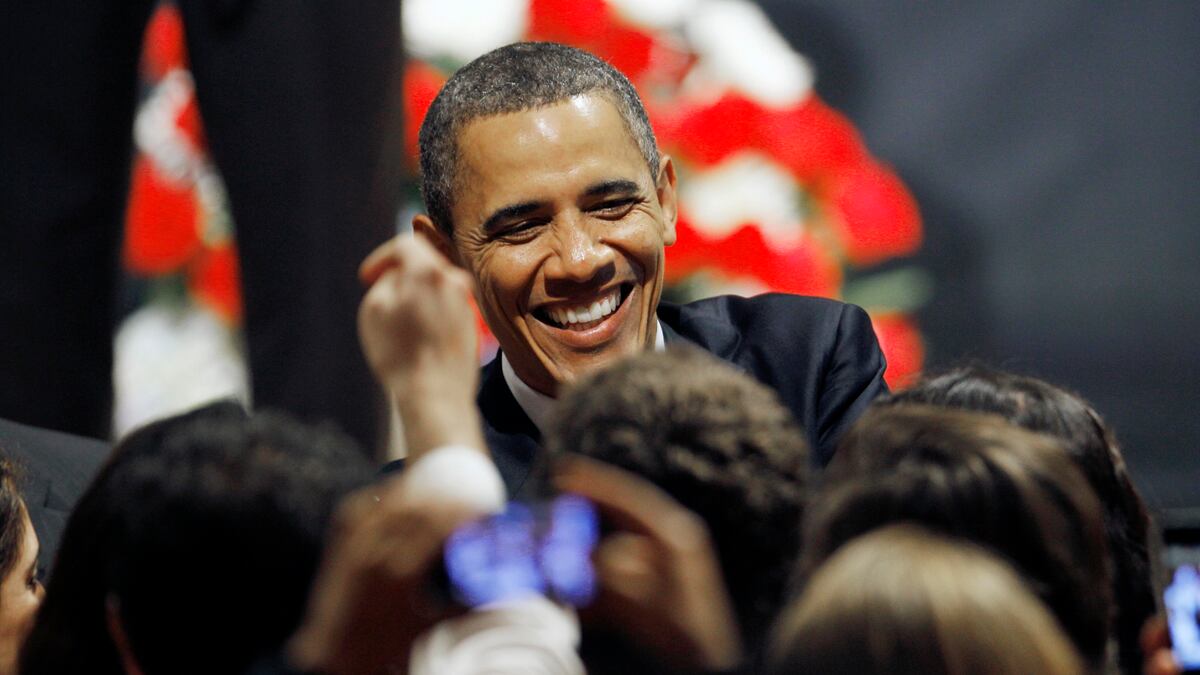Lost in the debates over deficits and job creation, it’s easy to forget Barack Obama circa 2008. You remember, the charming, eloquent candidate who vowed to change the way a president interacts with Washington, but also the way voters talk with their leader.
Seemingly out of the blue on Thursday morning, White House senior adviser David Plouffe, who was Obama’s 2008 campaign manager, announced a new Web platform for the beleaguered president to get that groove back. And none too soon for Obama, who’s lately been pummeled by the Washington culture of polls and partisanship.

The system, called “We The People,” will be a petition portal on WhiteHouse.gov and is billed as a short line to the Oval Office. Unhappy with the White House’s response to Hurricane Irene damage? Leave a comment. Have an idea for job creation? Put it into the system. The ideas that reach critical mass rise to the top, and Plouffe promises that those ideas will be heard by senior advisers. Obama may even respond himself.
"Soon, anyone will be able to create or sign a petition at WhiteHouse.gov seeking action from the federal government on a range of issues," Plouffe wrote in an email blast to former online supporters. "If a petition gathers enough signatures, the White House staff will review it, make sure it gets to Obama Administration policy experts, and issue an official response."
The approach isn’t entirely new. Back after Obama became president, the Republican National Committee tried something similar to crowd-source policymaking. GOP officials asked their base to vote on ideas, up or down, and the top ones would be heard by top congressional leaders. But what happened was that fringe conspiracies – such as questioning inspecting Obama’s birth certificate or impeaching the new president – tended to gain the most traction, so Republican officials scrapped the idea.
Which might be the key problem with Obama’s new approach. Those who write Web comments often aren’t representative of the electorate. In fact, they’re different in key ways: they’re generally young, more affluent and have the time and comfort to sit home and engage with social media. In other words, such an effort taps a specific demographic, but not all of America.
But that might be the point of Obama’s new 2012 play. It wasn’t the Tea Party that got Obama elected in 2008, nor aging gun owners. It was the 18-25 crowd, who came out for Obama in record numbers after catching the Hope and Change fever.
Where, many of them have asked, did that same man go? Obama’s top fundraising writer in 2008, Elijah Zarlin, was arrested this week at the White House trying to get Obama’s attention on environmental protection. The group DC for Obama, run by youthful campaign volunteers, had become disillusioned during the debt and deficit debates, even threatening to change the group’s name. And the Web portal my.barackobama.com, which helped assemble the online masses in 2008, has gone all but silent.
The question, then, is whether the idea will work. It’s likely to reel in a chunk of the young disillusionsed, eager to feel connected to Obama again. It may even swing the pendulum on the president’s lately sagging polls. But will it help move the needle on policy, especially as Obama prepares a large and potentially risky new jobs strategy? The White House undoubtedly figures that it can’t hurt to find out.






